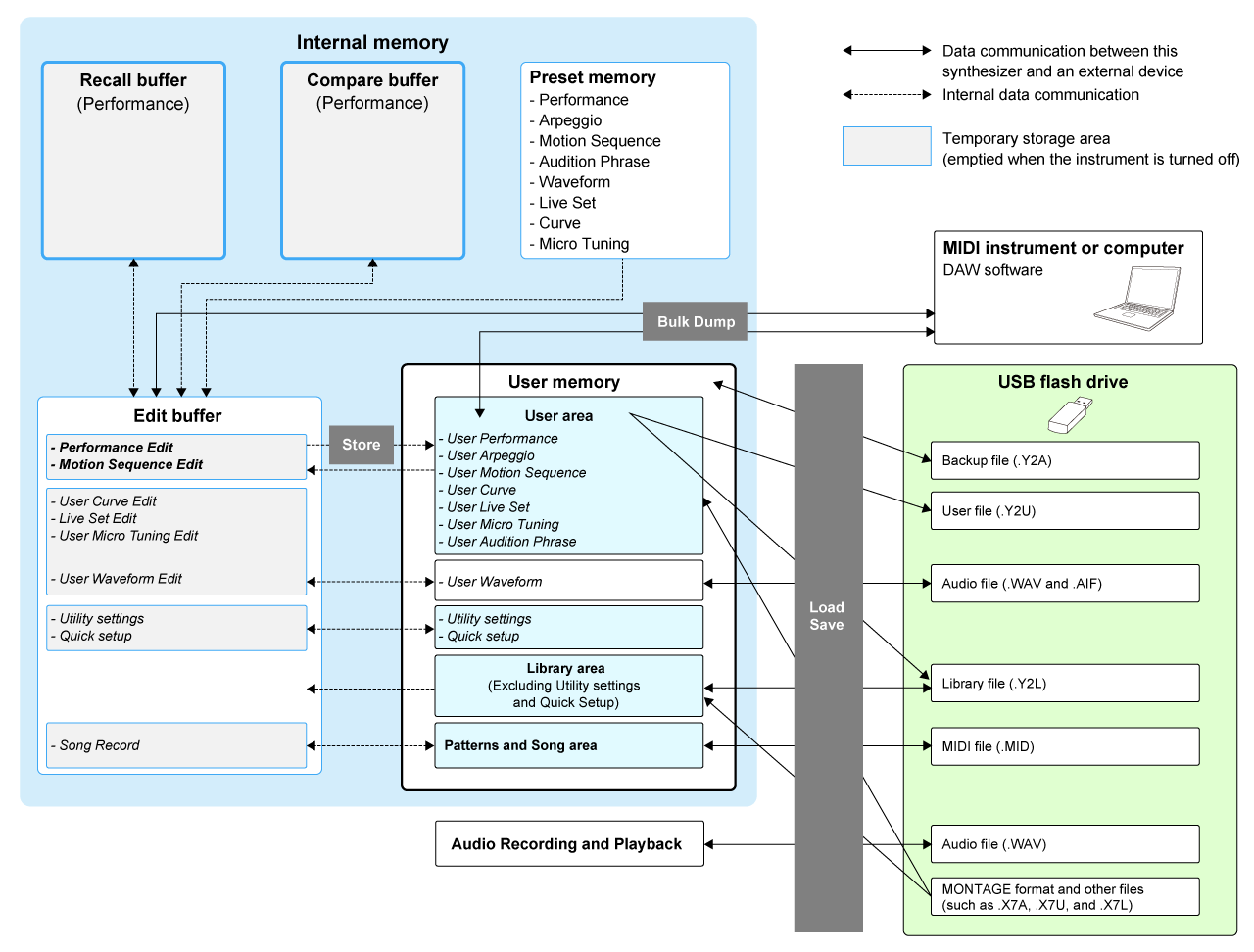The internal memory of this instrument holds the saved Performances, Live Sets, Songs, and other settings.
This chart shows the data flow between the internal memory and the external device.
(Click or tap to enlarge the image.)
Contains the Preset Performances, Preset Arpeggios, Preset Audition Phrases, and other settings.
You cannot overwrite the data in the Preset memory since it is read-only.
The Edit buffer is the work area for editing Performances, Live Sets, Songs, and other settings.
This work area allows both reading and writing, and the contents within this work area are erased when the instrument is turned off.
The edited Performances and Motion Sequences should be saved to the User Memory before selecting a different Performance or turning off the instrument.
(Other settings are saved automatically.)
The User memory has two areas: User and Library.
The User area holds the stored Performances and Motion Sequences, and other settings for the entire instrument, such as Utility settings and other User data edited in the Edit buffer.
When a User Performance is edited, you can store it as a new Performance or overwrite the existing Performance.
The Library area allows up to 24 library files (.Y2L) to be loaded from the USB flash drive. The settings saved in the Library area cannot be edited. To edit the settings in the Library area, send the data to the Edit buffer by selecting a Performance stored in the Library area or loading a Motion Sequence from the Library area. After editing, the data will be saved to the User area.
The User memory is used for reading and writing, and the data within this area will be retained after the instrument is turned off.
The Recall buffer and Compare buffer are areas used for temporarily saving the settings you are editing.
The Recall buffer is used as a backup for the Edit buffer.
If you accidentally changed to a different Performance without first storing the setting, you can use the Recall function to restore the temporarily saved settings from the Recall buffer to the Edit buffer.
The Compare buffer is the area for keeping settings before making edits. By using the Compare function, you can bring the settings temporarily saved in the Compare buffer to compare the edited and unedited sounds.
These buffers are for reading and writing data, but the settings will be lost when the instrument is turned off.
